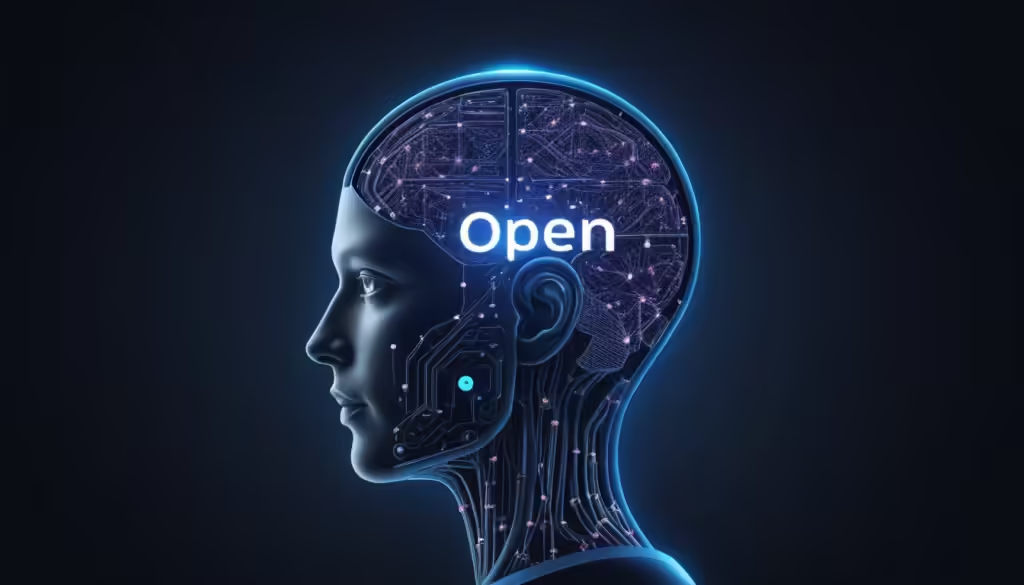Have you ever stopped to wonder about the intricate machinery that powers the AI applications we interact with on a daily basis? The truth is, behind the scenes, a myriad of tools and libraries work tirelessly to bring these applications to life. Today, we’ll explore six of these powerful tools, comparing and contrasting their features, applications, and unique advantages.
1. TensorFlow: The Flexible Workhorse
Developed by Google Brain, TensorFlow stands tall as an open-source machine learning framework. Its claim to fame lies in its flexibility, scalability, and unparalleled utility in model deployment. TensorFlow is the go-to tool for a wide range of tasks, including image recognition, natural language processing, and reinforcement learning. Its versatility and extensive community support have rightfully earned TensorFlow its heavyweight status in the world of AI development.
2. PyTorch: Dynamic and Developer-Friendly
Hailing from Facebook’s AI research lab, PyTorch is renowned for its dynamic computational graph and pythonic syntax. Offering GPU acceleration and a rich ecosystem of libraries, PyTorch is a preferred choice for computer vision, natural language processing, and reinforcement learning applications. Its flexibility, ease of use, and a vibrant development community make PyTorch a favorite among both researchers and developers.
3. Scikit-Learn: Streamlining Data Analysis
Sitting at the intersection of simplicity and functionality, scikit-learn is a tool that simplifies data mining and analysis. Built on top of numpy, scipy, and matplotlib, scikit-learn provides a wide range of machine learning algorithms with a straightforward API for ease of use. Widely utilized for classification, regression, clustering, and dimensionality reduction tasks, its user-friendly nature and versatility make it a popular choice for prototyping and experimenting with machine learning models.
4. OpenCV: Visionary in Computer Vision
OpenCV, an open-source software library for computer vision and machine learning, offers comprehensive functionalities for image processing and analysis. Widely employed in surveillance, robotics, healthcare, augmented reality, and various computer vision applications, OpenCV’s cross-platform compatibility and robust community support solidify its position as a significant player in the field.
5. H2O.ai: Automating Machine Learning
H2O.ai offers both open-source and commercial platforms for building and deploying AI models. Recognized for its automated machine learning capabilities, distributed computing, and model interpretability tools, H2O.ai platforms find applications in predictive analytics, anomaly detection, risk management, and various other machine learning tasks. Its simplified model development, scalability, and support for model interpretability contribute to its popularity among developers.
6. IBM Watson Studio: A Comprehensive AI Platform
For those seeking an all-encompassing AI platform, IBM Watson Studio is the ultimate choice. Providing tools for data scientists, developers, and subject matter experts, IBM Watson Studio covers data preparation, model development, deployment, and monitoring. Leveraged for building AI-powered applications, analyzing data, and developing machine learning models, its integration with IBM Watson Services, collaboration features, and enterprise-grade security make it a top choice for large-scale AI projects.
In conclusion, each of these six tools—whether it’s TensorFlow’s scalability, PyTorch’s flexibility, scikit-learn’s simplicity, OpenCV’s vision capabilities, H2O.ai’s automated machine learning, or IBM Watson Studio’s comprehensiveness—plays a critical role in advancing the field of AI. Together, they form the backbone of the AI applications that seamlessly integrate into our daily lives, showcasing the remarkable synergy between innovation and technology.
- Sam Altman’s Take on AI Writing: Are Writers Safe?Alright, let’s get into what OpenAI CEO Sam Altman has to say about AI and the future of writing. If you’re a writer, you’re probably wondering if AI is coming for your job. Altman’s got some thoughts, and spoiler: you’re not out of a job just yet. In a recent interview, Sam Altman addressed the… Read more: Sam Altman’s Take on AI Writing: Are Writers Safe?
- OpenAI in Turmoil, What’s Going on Behind the Scenes?The recent upheaval at OpenAI has sent ripples through the tech community, raising eyebrows and concerns alike. The video in question meticulously dissects the series of events that have led to the exit of several high-profile executives, including Chief Technology Officer Mira Murati and Chief Research Officer Bob McGrew. As we delve into this narrative,… Read more: OpenAI in Turmoil, What’s Going on Behind the Scenes?
- BasedLabs AI: The Central Hub for AI-Driven Media GenerationBasedLabs AI is quickly becoming a central hub for creators seeking to push the boundaries of digital media. Whether you’re an artist, designer, or just someone curious about AI-driven creativity, BasedLabs offers a comprehensive platform to explore the future of media generation. With a growing community of thousands of creators, BasedLabs provides an environment where… Read more: BasedLabs AI: The Central Hub for AI-Driven Media Generation
- PicLumen Free Unlimited AI Image Generator: Features and Market ComparisonPicLumen is a versatile AI image generator that simplifies the creation of high-quality visuals. Whether you need images for creative projects, social media, or professional presentations, PicLumen offers a robust set of features that are accessible to all users. Below, we explore PicLumen’s key features and compare them with other popular AI tools available in… Read more: PicLumen Free Unlimited AI Image Generator: Features and Market Comparison
- Memories: A Review of AI-Powered Photo Editing with MemsFrom the moment you download Mems, it’s clear that this app is designed with user experience in mind. The sleek interface is intuitive, making it easy for anyone — from professional photographers to casual users — to navigate and make the most of its powerful features. Mems positions itself as a tool that can take your photos “to the… Read more: Memories: A Review of AI-Powered Photo Editing with Mems







Leave a Reply